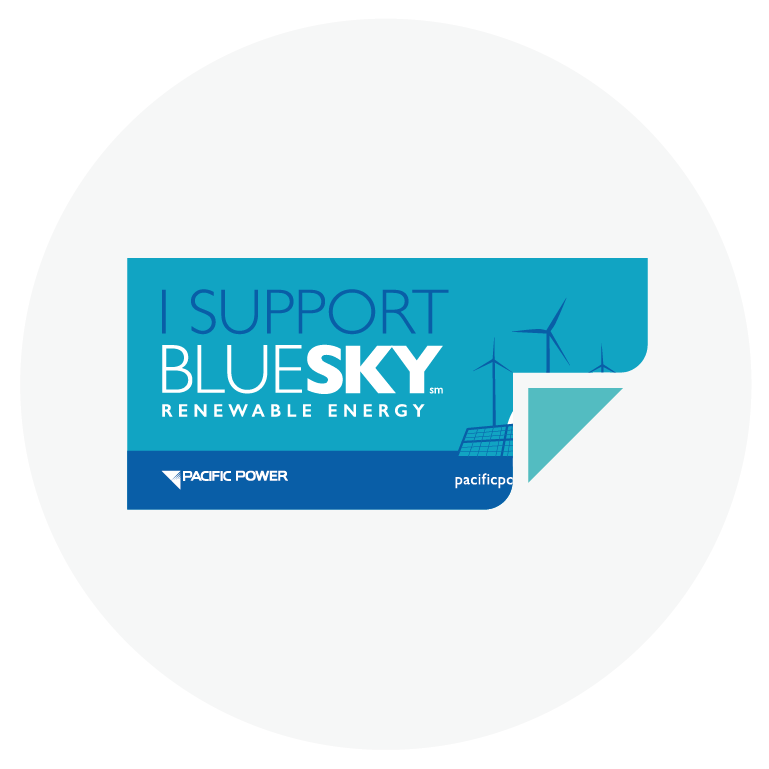
Select the participation level that’s right for you. Need help? Use our calculator below.

You pay a little extra on your bill each month, and Pacific Power purchases renewable energy certificates on your behalf.

Your participation positively impacts the environment and supports regional renewable energy.
Calculate Your Cost to Participate
Learn more about Blue Sky's renewable energy mixDone! Check out your results.
If you enrolled in our Blue Sky Usage option, you’d be matching 100% of your monthly electricity use with renewable energy for an average of about $ more on your bill.
If you join the Blue Sky Block program at the amount of (or kWh), you'll match approximately % of the electricity usage you entered with renewable energy. This participation level would add $ to your monthly bill.

reduce your carbon footprint by lbs of CO2e

brew pots of coffee

do
loads
of laundry

travel miles in an electric vehicle
Enjoy exclusive participant benefits
You’re making a big difference when you join Blue Sky, and that’s why we offer exclusive rewards and resources to our community of Blue Sky participants. Discover the added benefits of enrolling in Blue Sky:
Personalized impact report
You’ll receive a yearly personalized report with your renewable energy impact.

Impact news
Stay up to date on all things Blue Sky! We’ll share news around recent projects, community efforts, and more.

Facebook community
Join our online community of Blue Sky participants and stay up to date on the latest projects, benefits and more.
Like our Facebook page

Share your pride
Display your support for renewable energy with a free window cling.
- Your participation in the Blue Sky® program helps to reduce the carbon footprint associated with your electricity use. Carbon footprint reduction based on the difference between the 2023 Blue Sky Block & Blue Sky Usage mixes and the 2022 PacifiCorp fuel mix (PacifiCorp, 2024).
- Laundry electricity consumption based on a single laundry load, for a washer using 0.43kWh, and a dryer using 2.00 kWh of electricity (Shrink That Footprint, 2024).
- Electric vehicles use on average 32.18 kWh per 100 miles (DOE Fuel Economy Guide, 2024).
- One LED light bulb consumes 11.0 kWh of electricity per year when used for 3 hours per day (EnergySage, 2024).
- The average drip coffee maker used 2 hours per day needs 1200 watts of energy to produce a pot of coffee (ElectricityPlans.com).
